Have you ever felt like you could use some sort of lifetime visualizer or debugger for tricky borrow checker issues in Rust? Has building up a mental model for complex lifetime interactions and their rules felt like one of the hardest things about writing Rust? I am by no means impervious to particularly tricky borrow checking woes, but I have built up a way of thinking about lifetimes and borrowing that I want to share with you that has helped me reason about a wide variety of borrow checking cases and I think is simple enough to keep in your head.
programs represent a space.
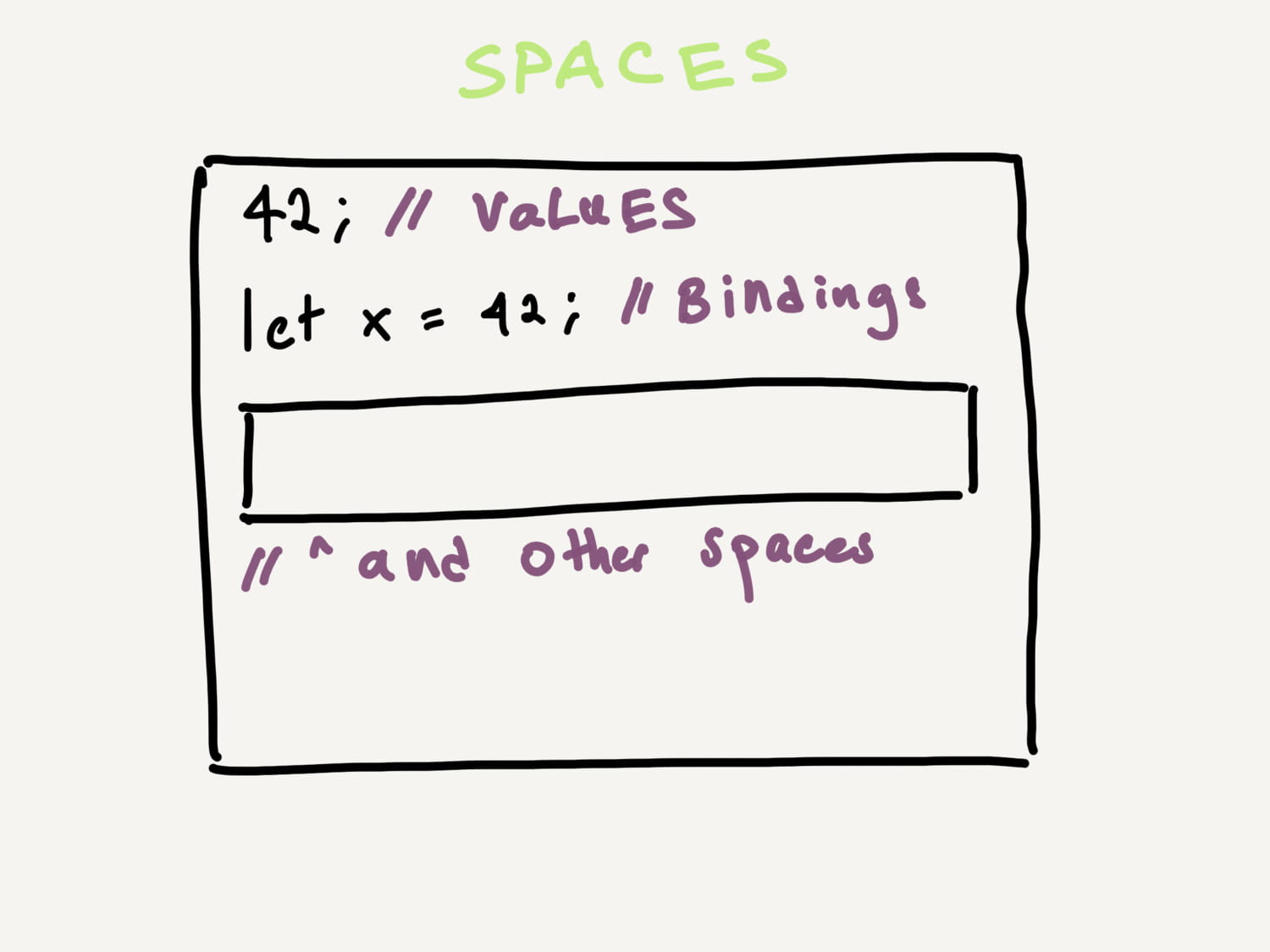
this space may contain other spaces, values, and bindings.
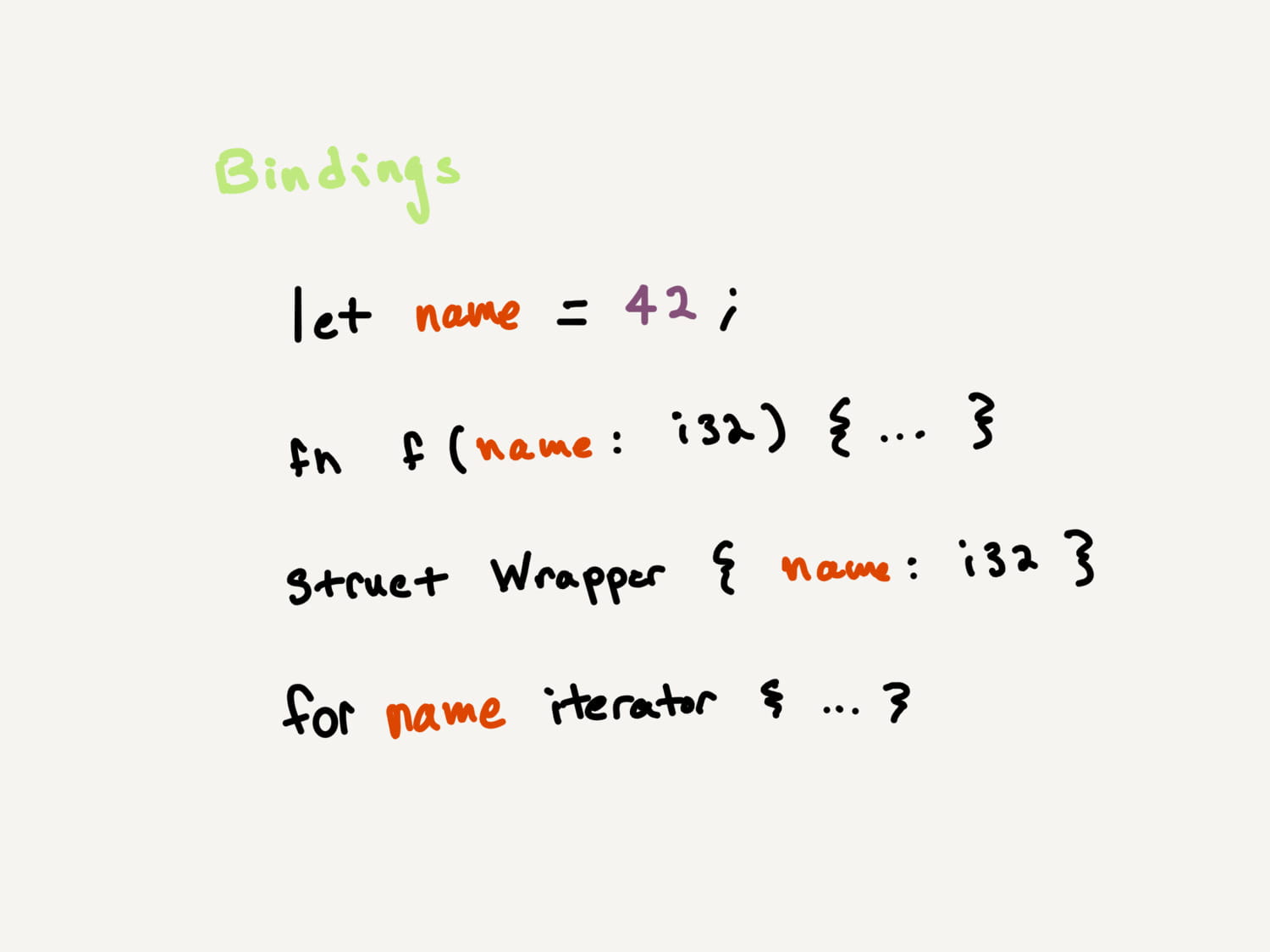
a binding binds or associates a name to a value. we use values in functions, operations, in data structures, and so on, by their name or by their value directly. in order to use a value we must move it into place. when values move they are never in both places at the same time, hence original values in Rust can be moved exactly zero or one times. this requirement allows us to track where values are used in a program.
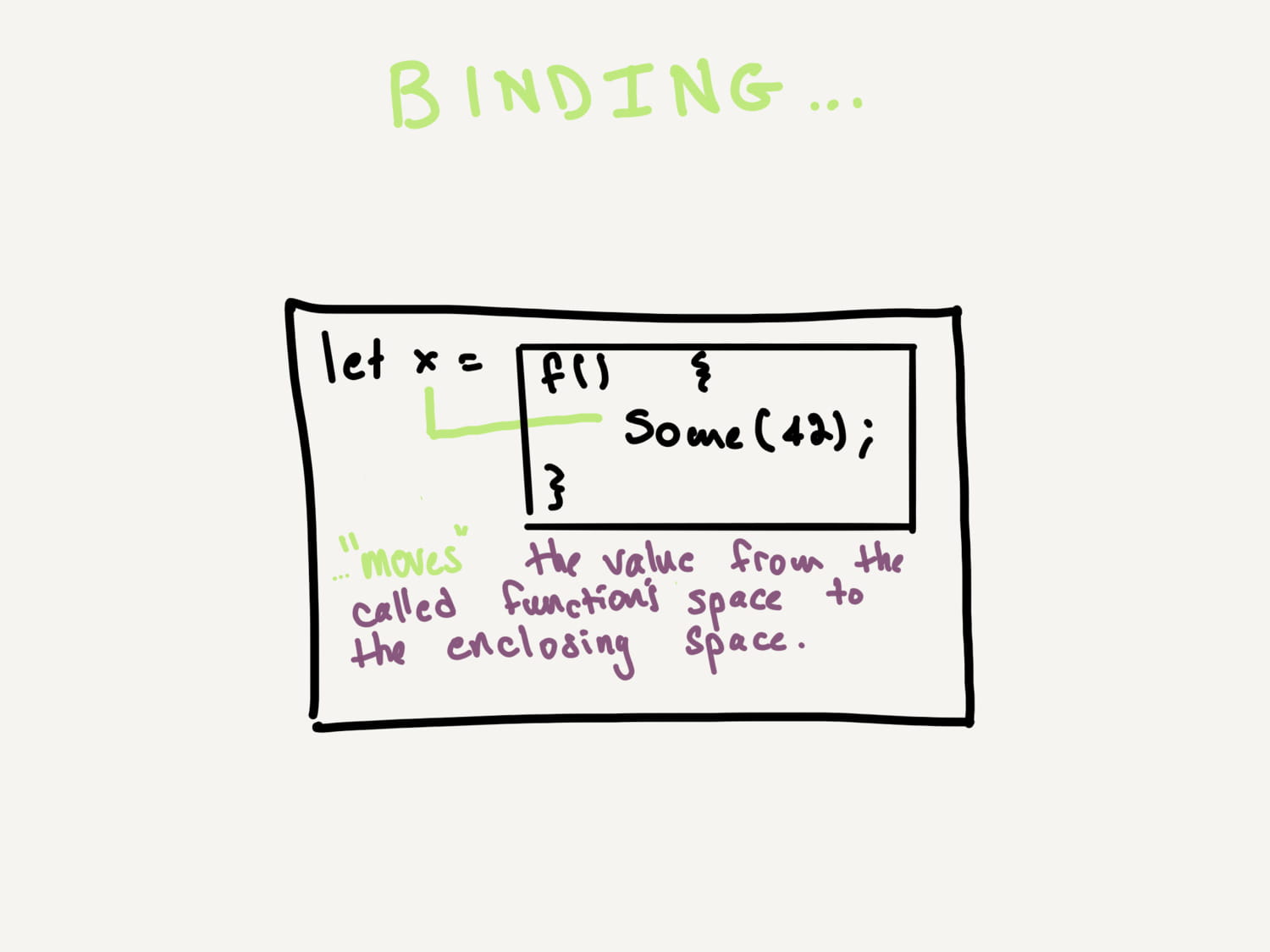
we could duplicate a value, but such a clone would not increase the number of times we can use the value, it simply has created a new, distinct value that can move around independent of the other. Some families of values automatically clone when they move, but this isn’t the norm. if we truly want to reuse an original value, we can create a reference to it. values do not live outside of the space where they are defined, unless they are moved to another space explicitly for use.
When a value is left behind in a space and we can no longer reach it, we say that it has been dropped. in Rust, we can only take references to values that have not been dropped. in other words, if the value resides in a space that contains or is equal to the space where a reference will live, then we can create the reference. a similar analogy might be talking to someone in a house; you can only talk to the person if they still exist and are living in the same space or some attached space where they can hear or see you. This is in contrast to languages where a references is entirely valid if it points to something that no longer exists.
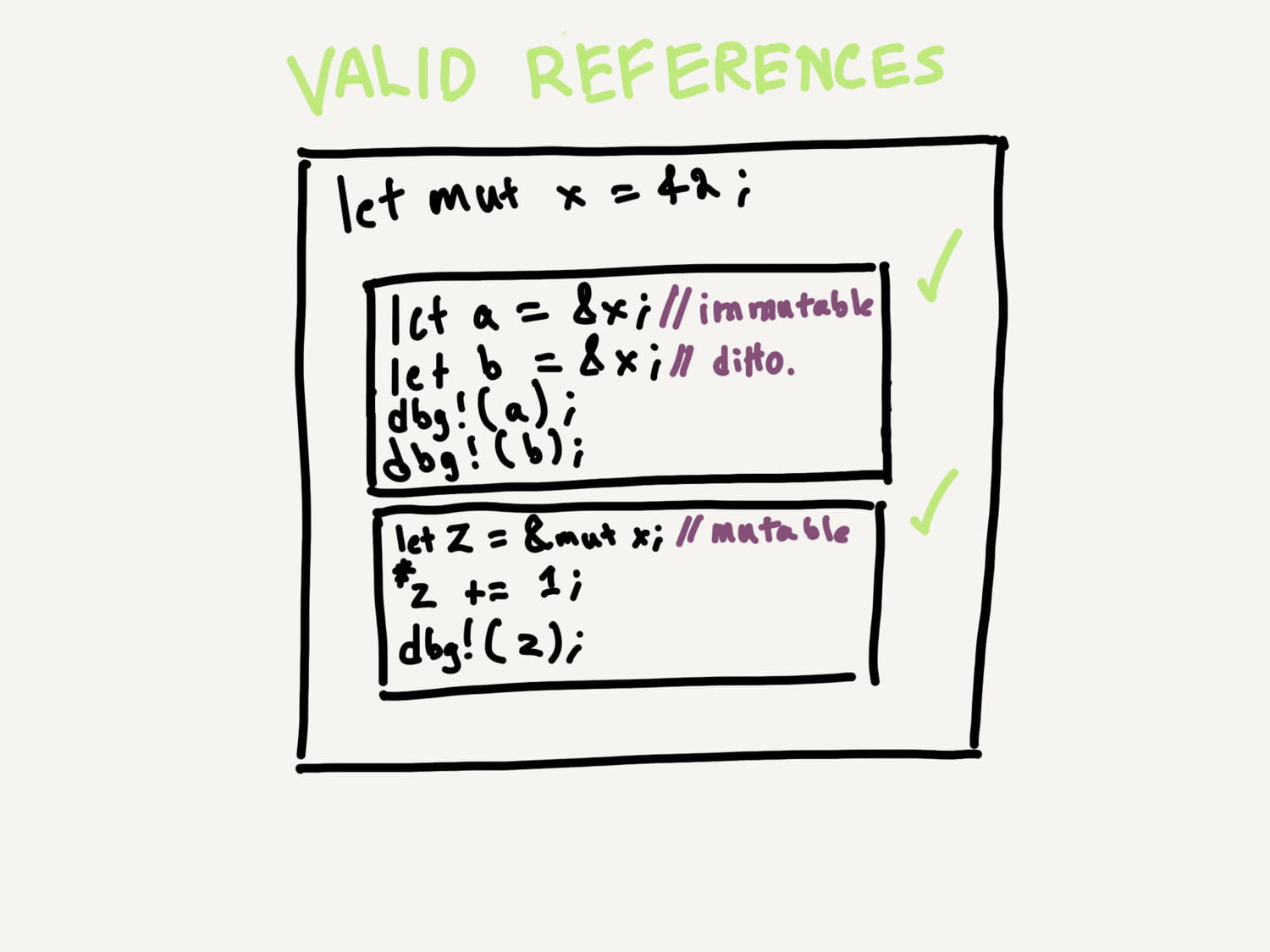
if the intent is to change a value through a reference, you can only have one reference at a time, but if the intent is purely to view a referent, the value being referenced, then you can have as many references as you like. we call these mutable and immutable references respectively. Containment isn’t always required for references, though; sometimes the use of a reference can be elastic, meaning that the compiler understands the use is only for a given period of time and no longer. This elasticity comes from a property of references you may hear called non-lexical lifetimes, AKA NLL, meaning the space of the reference isn't tied to the space where the binding happened.
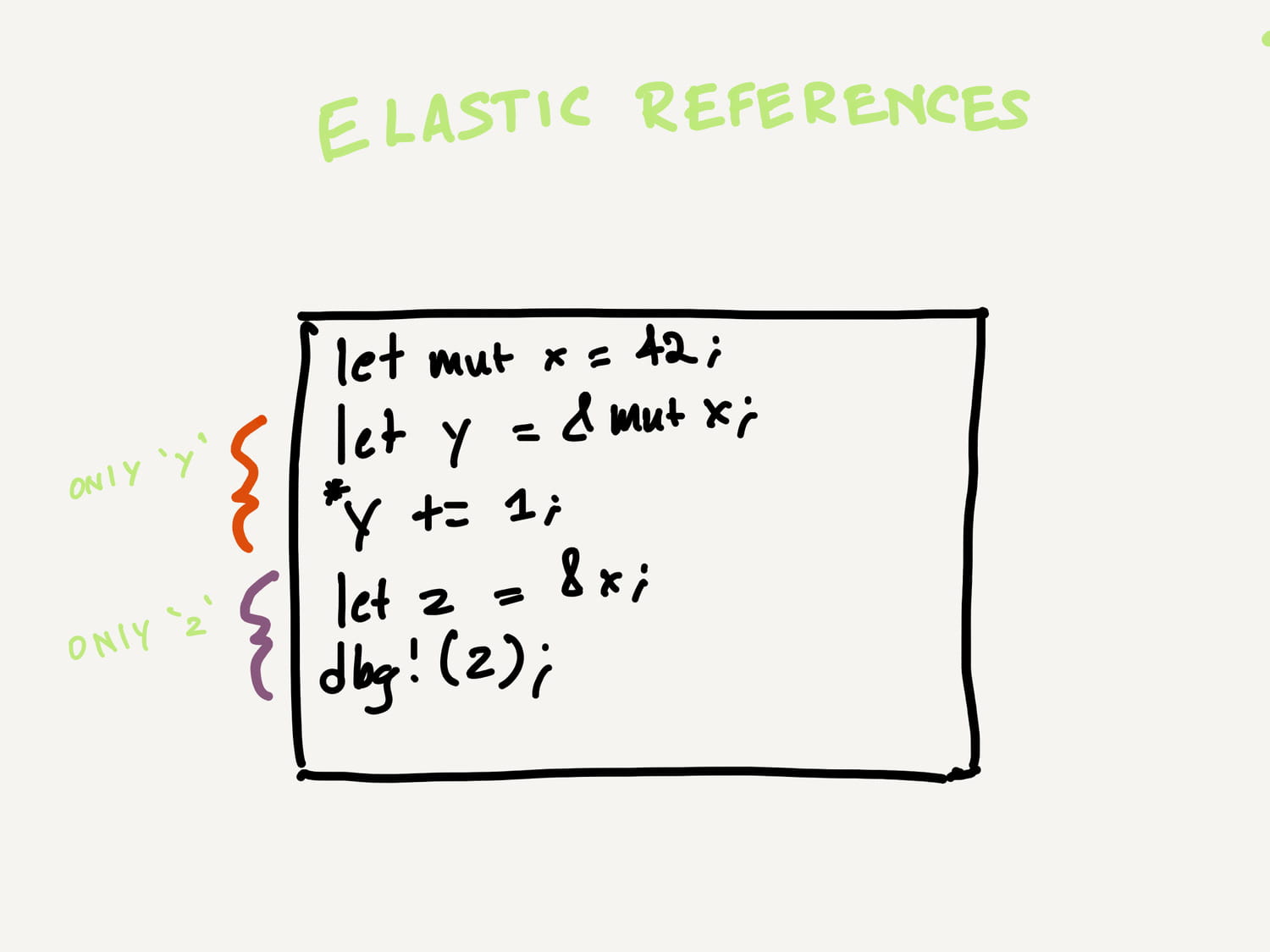
the most obvious definition of space is with blocks using curly brackets, but functions, data types, and loops all define space. functions hide away space like a fold on a piece of paper. loops define space by compressing several spaces into what looks like the space of one. closures and data structures are portable spaces that capture or close over values and references to values. As we saw before, each space tends to also provide ways for values to be bound to names.
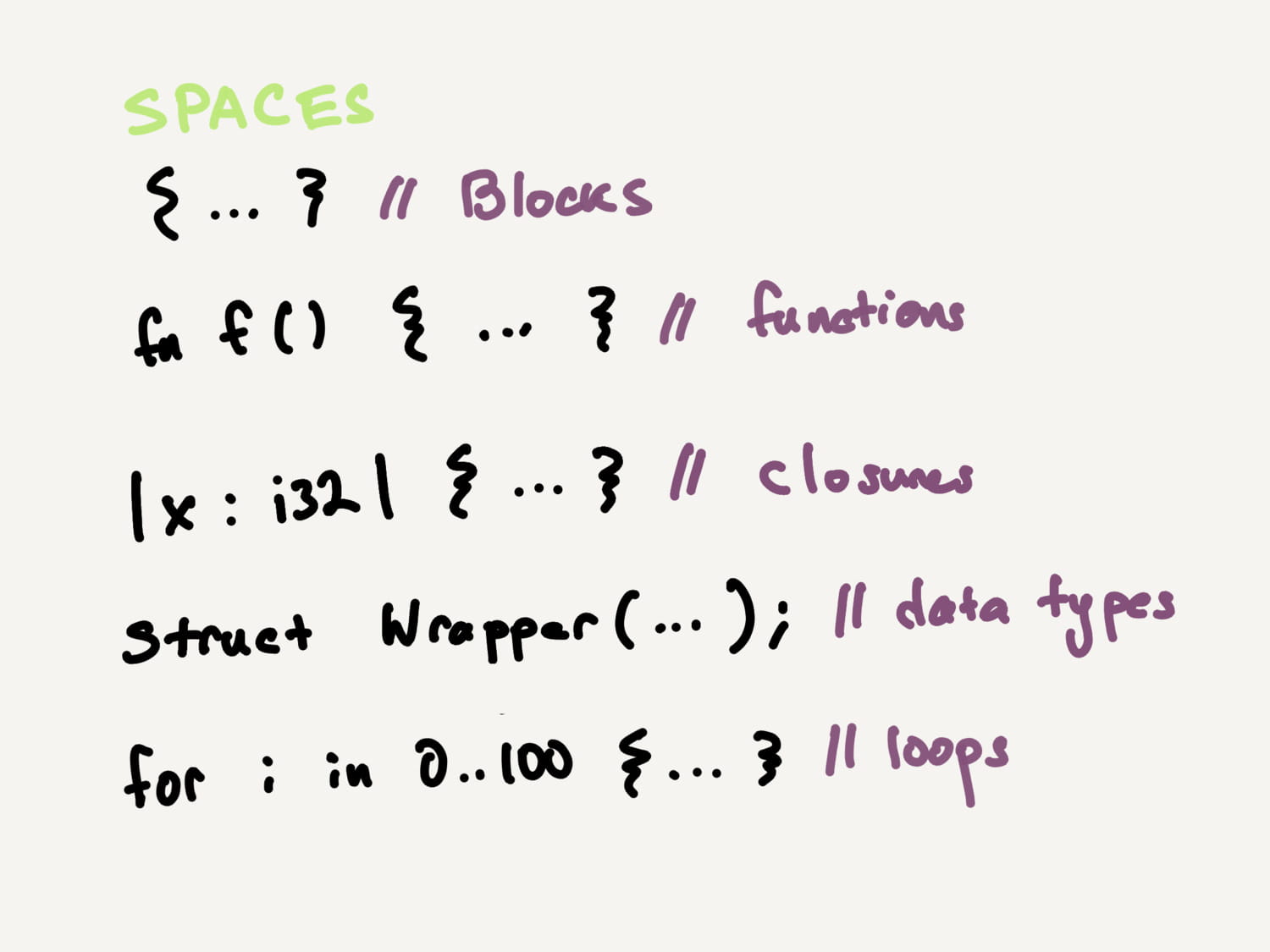
the space of the entire program is not the same space of the main function. we call the space of the entire program a specific label, 'static. other threads may run to completion well after the main thread has finished, for example, meaning we can not spin up threads that take references to original values in another thread. again, the static label is special in that it is not a placeholder but rather the name of a specific space.
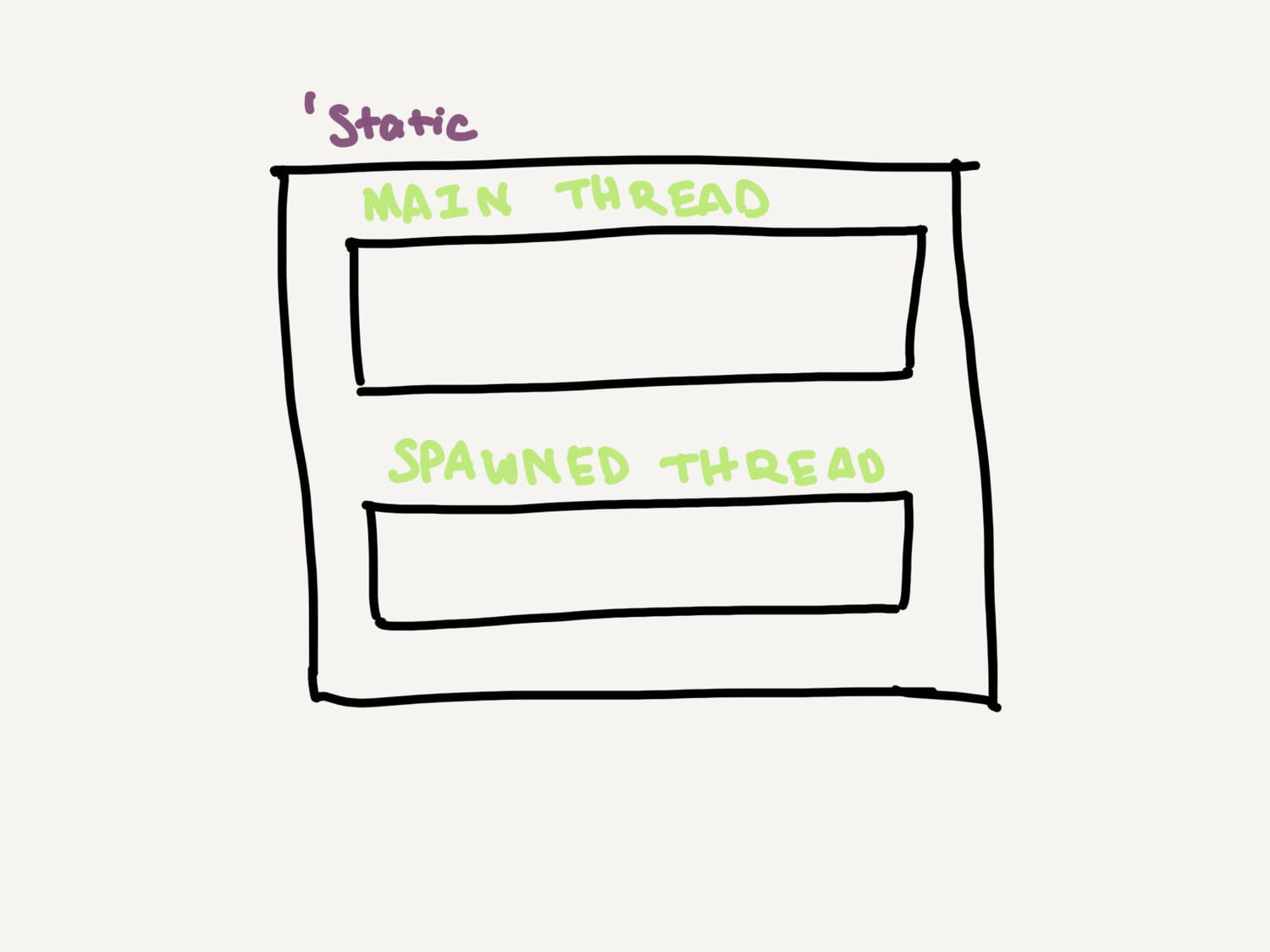
otherwise, these labels are placeholders which are generic names of spaces that will get filled in based on the context of where they are mentioned. because spaces are like spans describing where a value lives, along with some sense of time, as the program executes, we call these labels lifetimes. we say that original values are owned as the name owns the value it was bound to. since values have owners, we say that a reuse of a value through a reference is a borrow since the value will be given back.
Rust will assume that all references in function arguments point to the same space. this is known as elision as the labels of the spaces do not need mentioning and are removed (elided). however, sometimes you want to make it clear that each reference points to different spaces. we can declare these differences using explicit lifetime labels on the type or function in question that we tend to call annotations.
when you run into a borrowing or a lifetime issue it can help to think spatially. consider how the spaces look unpacked across your code. this can be tricky, but you can practice by occasionally inlining code directly from a function or unrolling a loop to help visualize the spaces in question. as with this article, drawing out the spaces can help abstract away a lot of the other noise that code may supply. Here are some examples of spaces inclined into larger spaces:
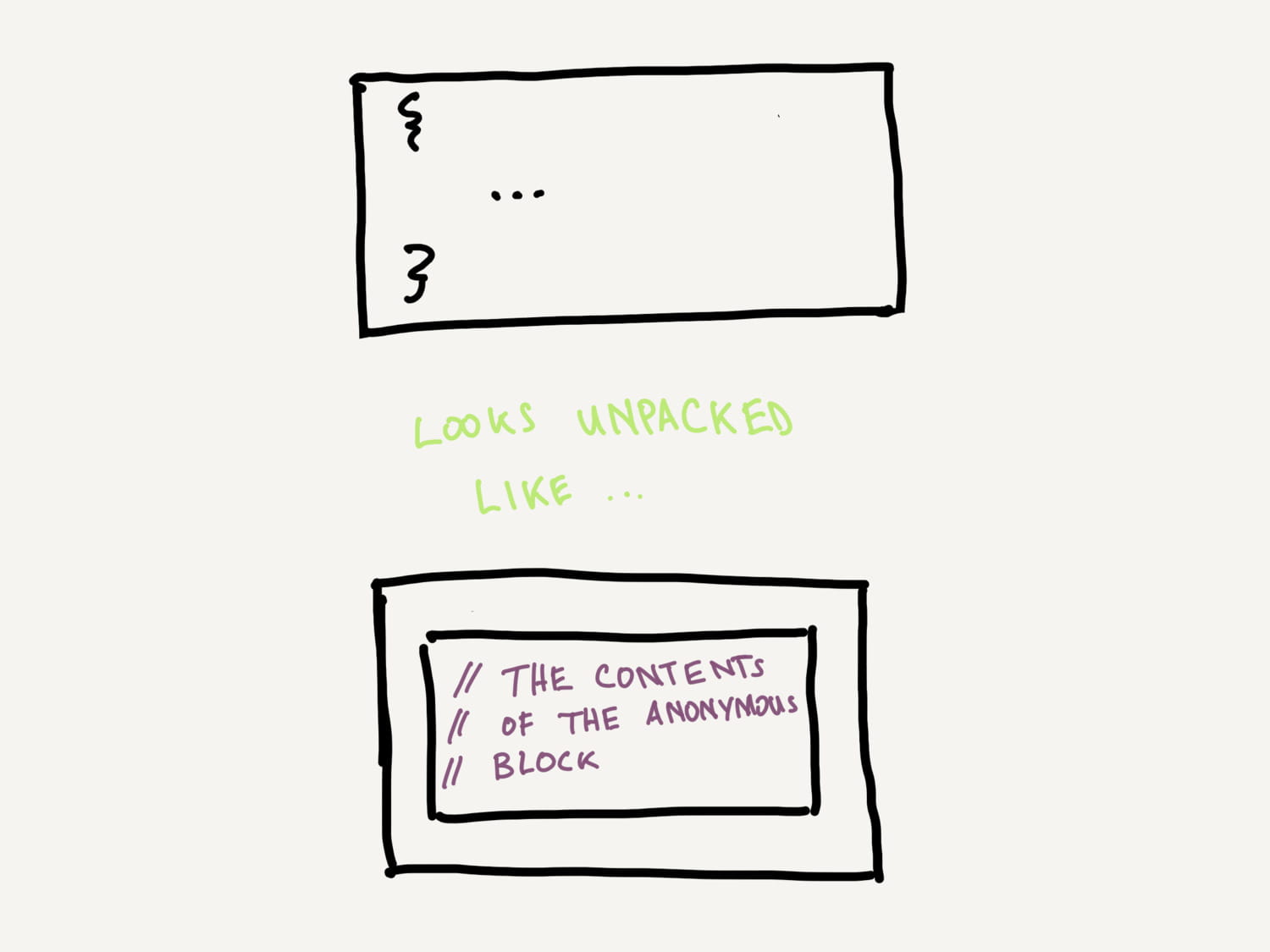
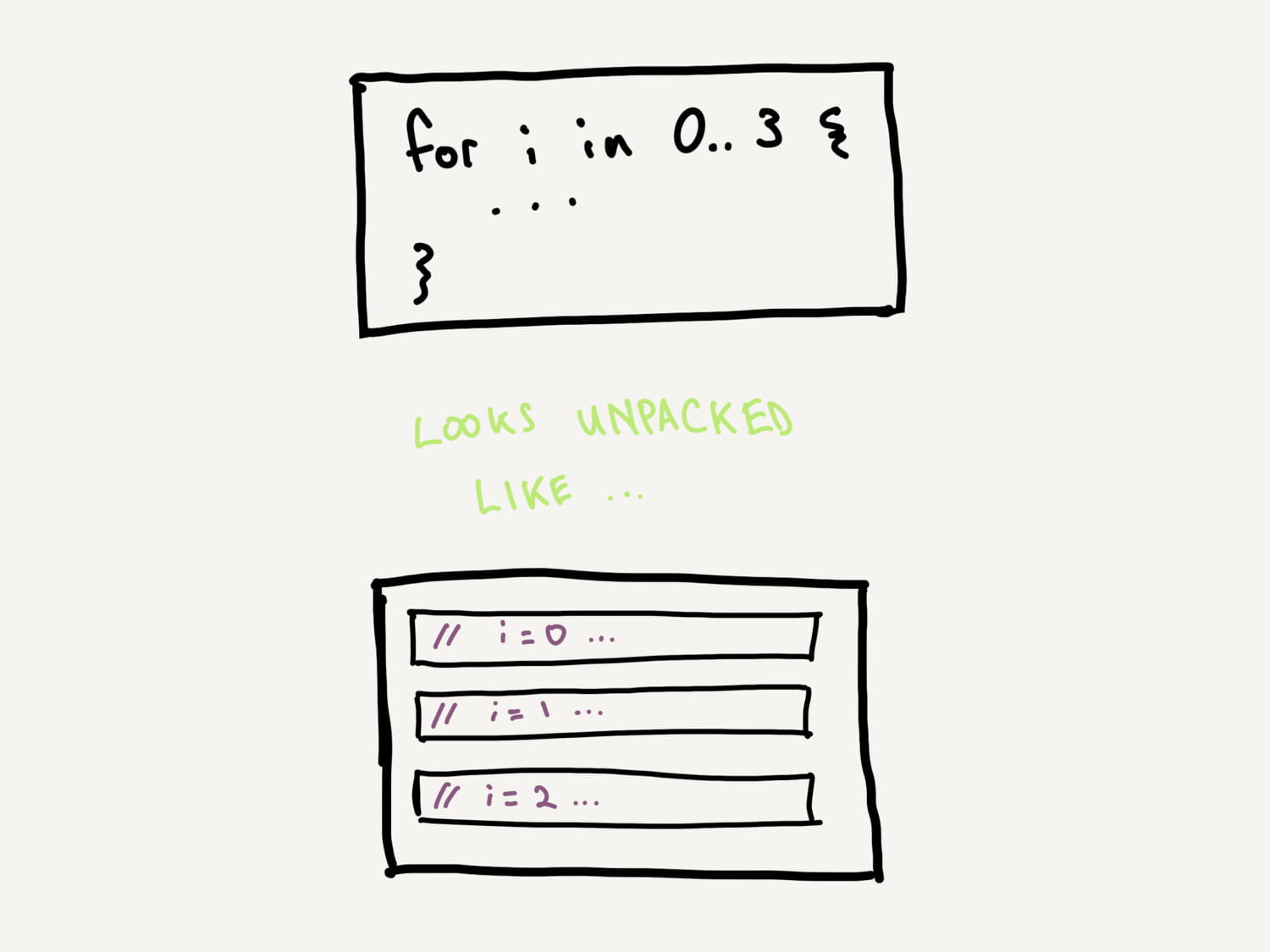
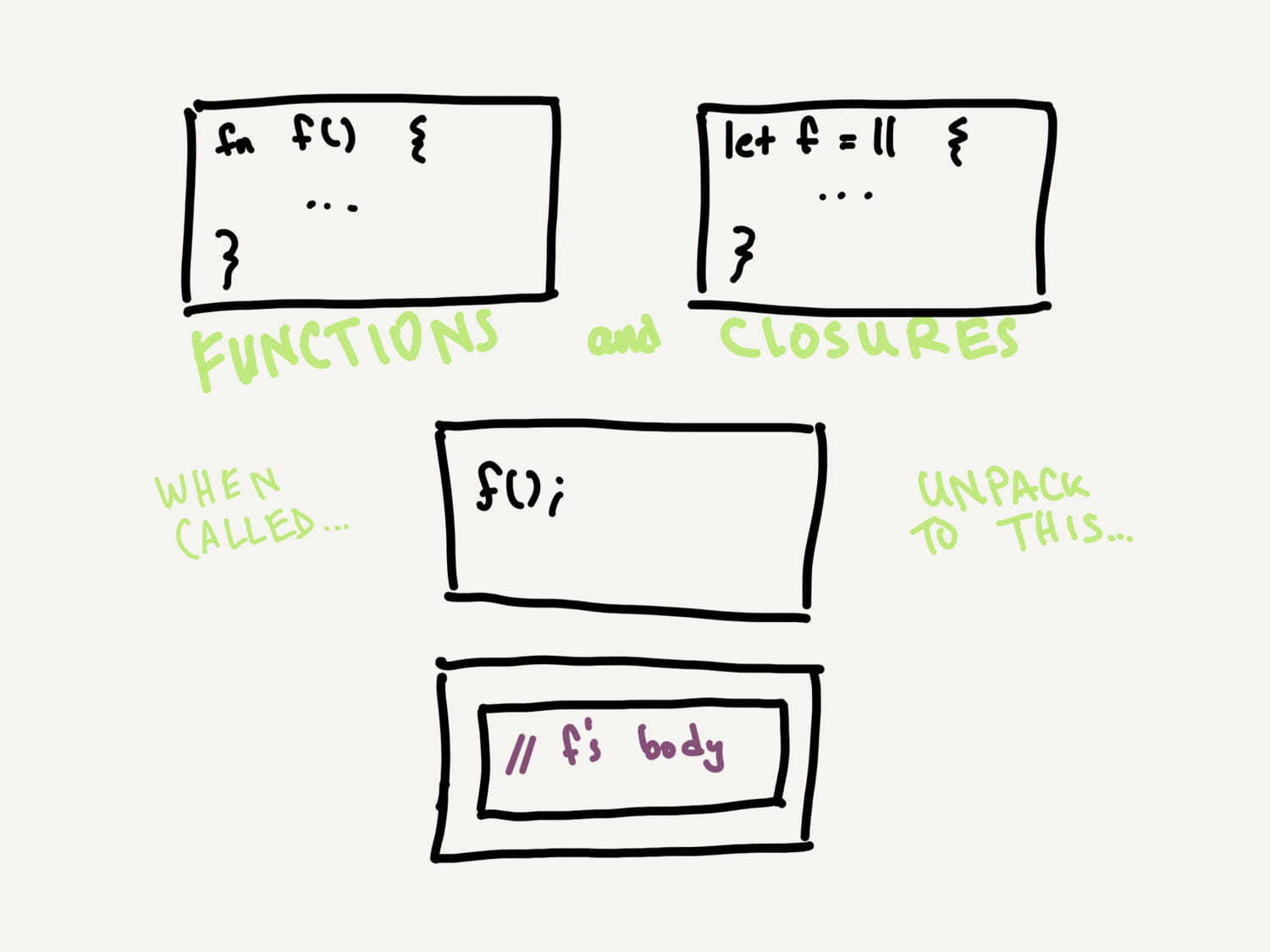
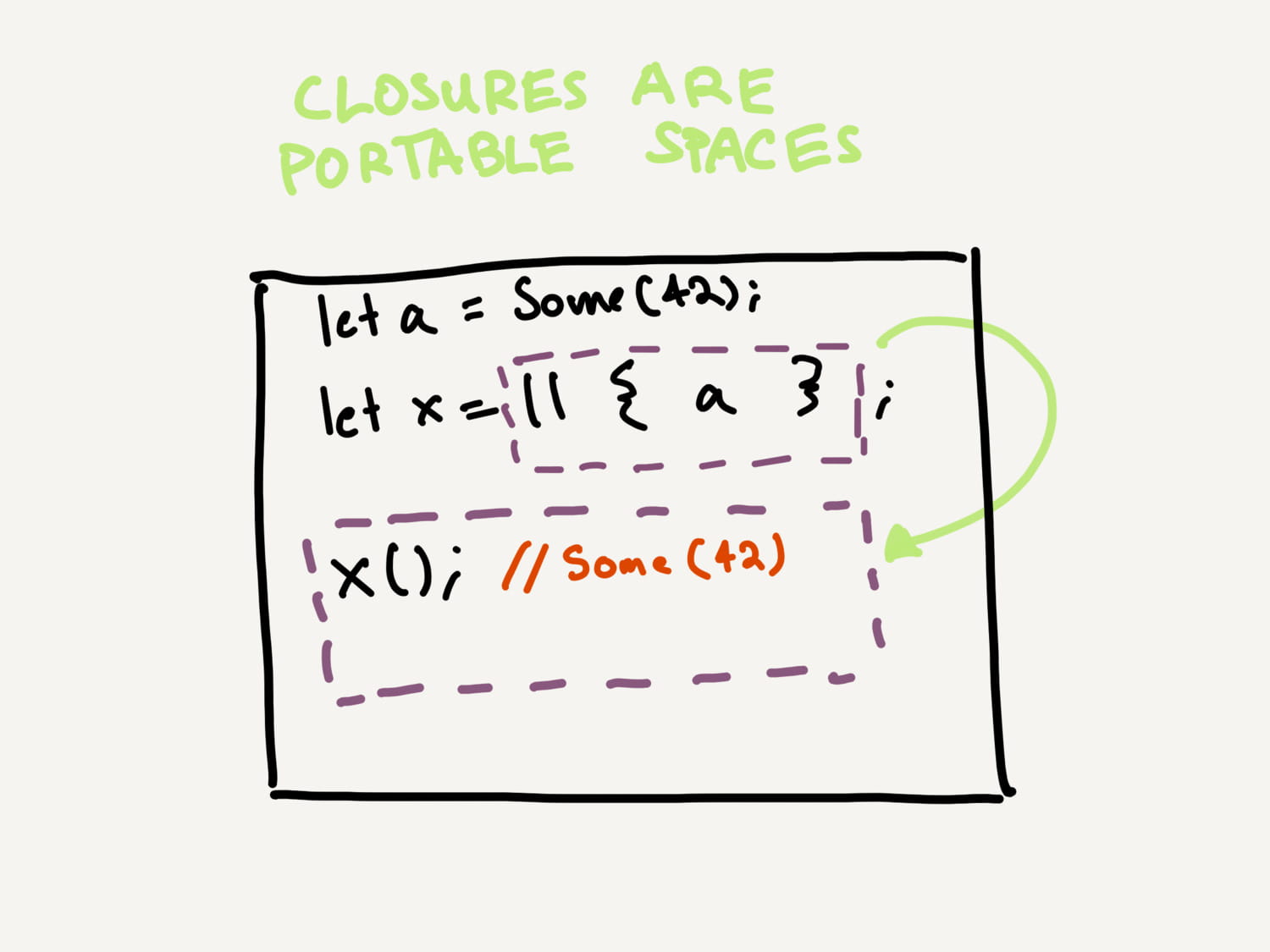
lastly, you should generally make lots of small programs to learn the ins and outs of fundamentals, and making minimally reproducible cases of borrows and moves is no different. Running cargo new is cheap, and so is going to the Rust playground when you want to scratch an itch about a question you have.